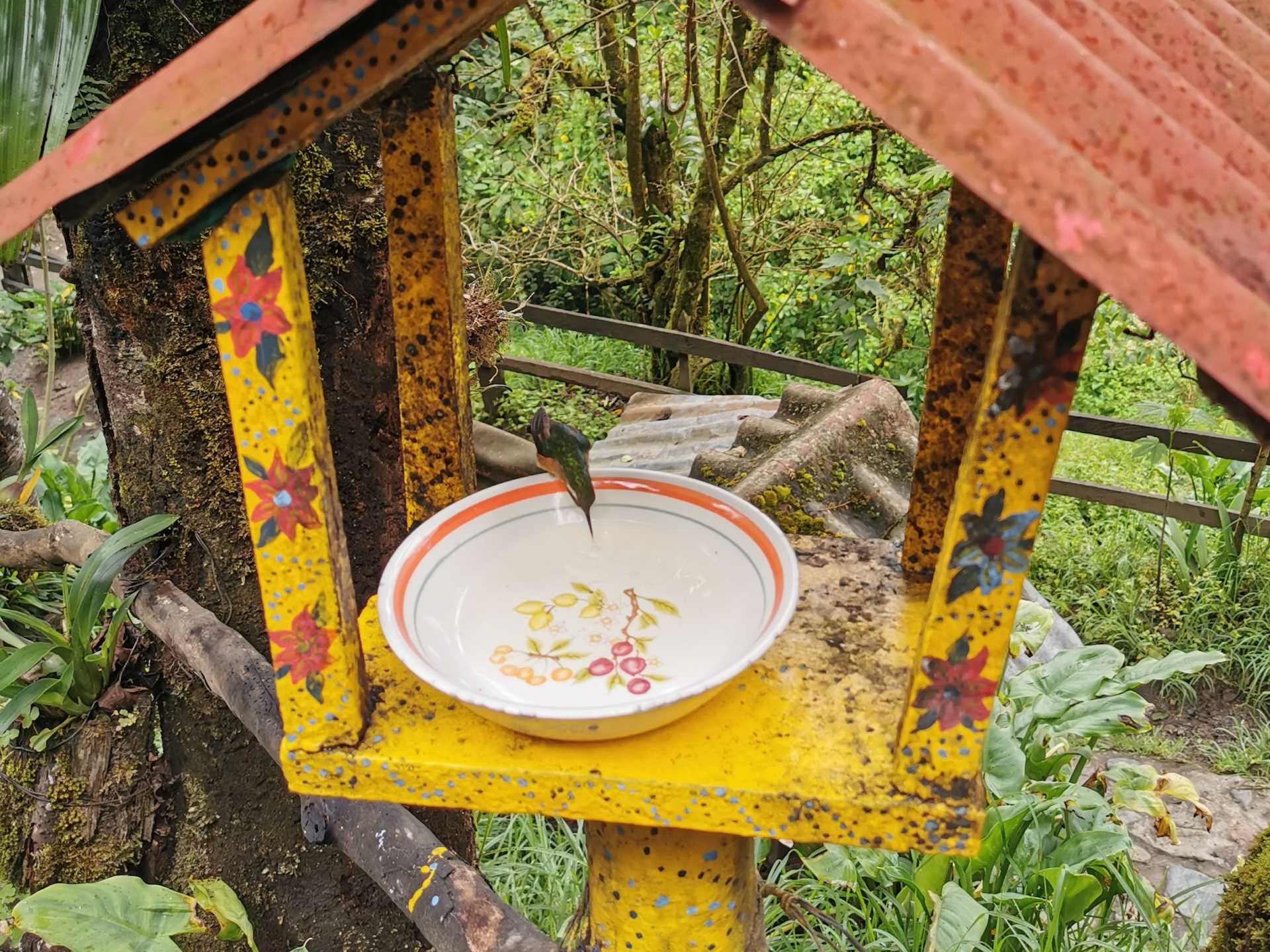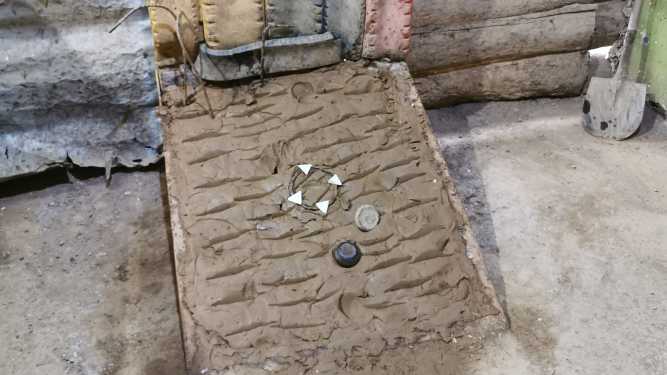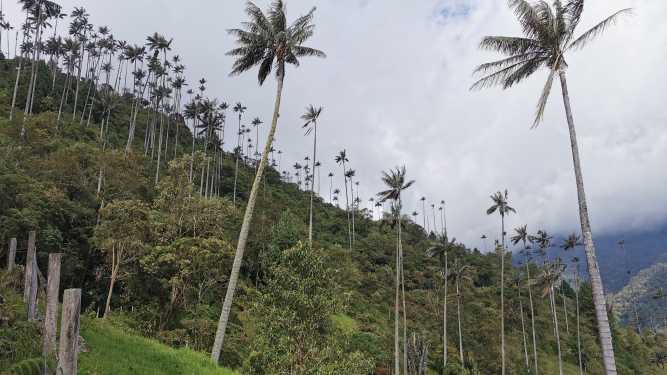
Colombia's valley of the wax palms
Hiking Cocora Valley
Explore the awe-inspiring Cocora Valley, nestled near Salento, Colombia, and discover the world's tallest palms - the national tree of Colombia. Trek through farmland, rainforest, and cloud forest to witness the stunning beauty of the picturesque wax palms. Immerse yourself in the breathtaking panoramic views of the valley on this unforgettable journey.
Where is the Cocora Valley?
The Cocora Valley, also known as Valle de Cocora, is a must-visit destination near the charming colonial town of Salento in the heart of Colombia's "Eje Cafetero" coffee triangle. The region is famous for growing and producing some of the best coffee in Colombia, making it a perfect place to base yourself during your visit. Getting to the valley is surprisingly easy, as Salento serves as an ideal hub to explore the area. Although there is no airport in Salento, you can take a direct flight to nearby towns and then hop on a bus or taxi to Salento.
During our trip, we flew from Bogota to the nearby town of Pereira, which provided a seamless travel experience. Salento itself is a beautiful and laid-back small town, and the whole town is easily walkable. The locals enjoy playing tejo, Colombia's favorite explosive sport, and the town's specialty dish is trout, which you can enjoy fried, grilled, or baked, with a wide range of toppings.
Starting the hike
Start your day as early as possible to catch a "colectivo" from the central plaza in Salento. Every day several 4-wheel drive jeeps, affectionately known locally as willy’s, wait to drive tourists to the entrance point.
The willies will wait until they are full until they begin the 30-minute journey. However, expect more people than the jeeps seat, as they allow a couple of people to stand off the back simply holding on. Expect the willy to drop you off in a parking lot just across the road from the start of the hike.
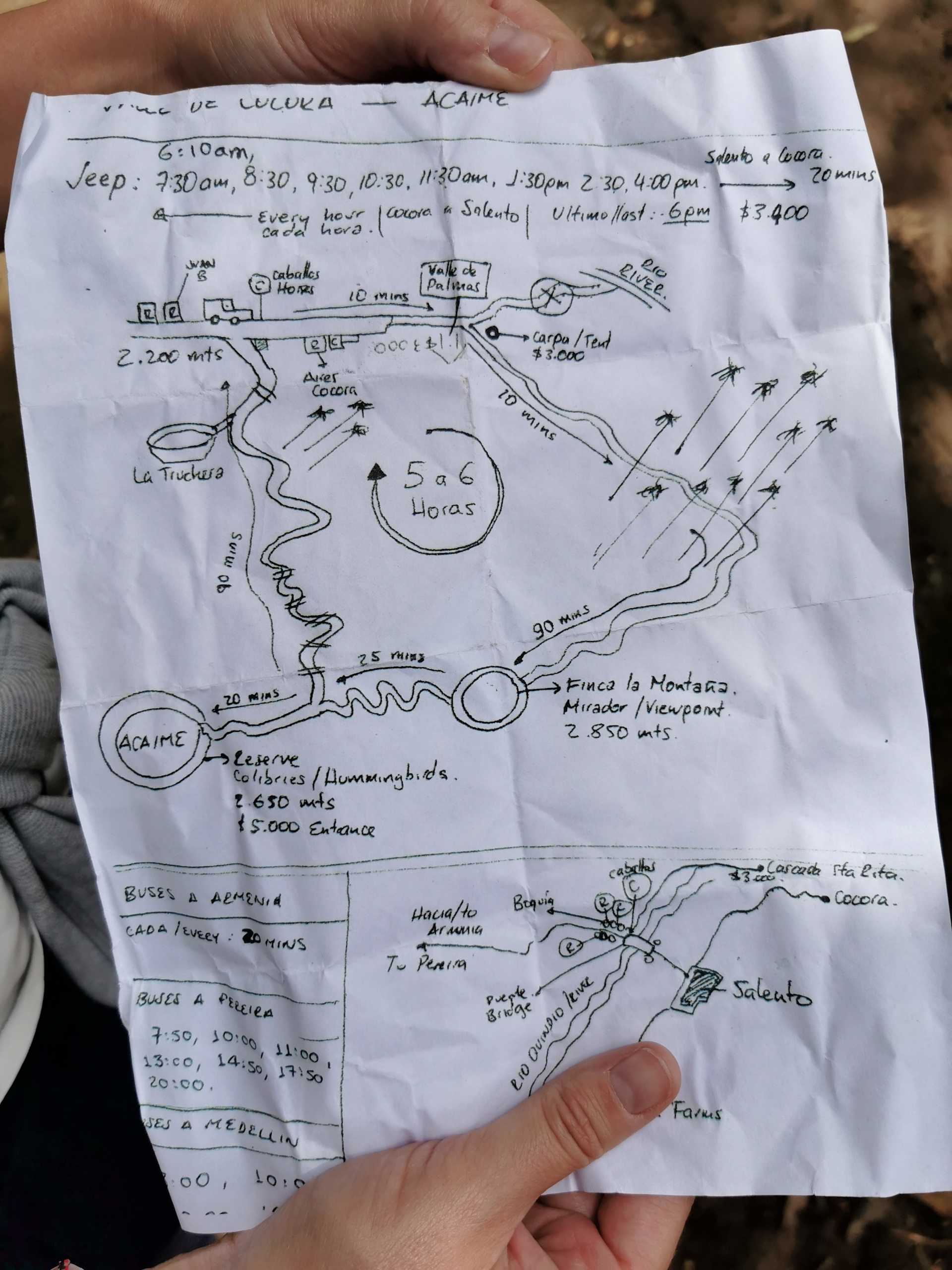
There are three routes for hiking the Cocora Valley:
- The direct and shortest route - ideal if you're tight on time – heading straight to the Valle de Cocora and back.
- The full loop, which can be tackled either clockwise, or counter-clockwise.
The Cocora Valley hike
We opted to do the full loop counterclockwise, saving the fields of palm trees as a reward for the end of our hike. Officially, the trek is expected to take you up to six hours, not including the optional hummingbird sanctuary stop, this should be easily achieved at a leisurely pace - including time for many a photo stop enroute.
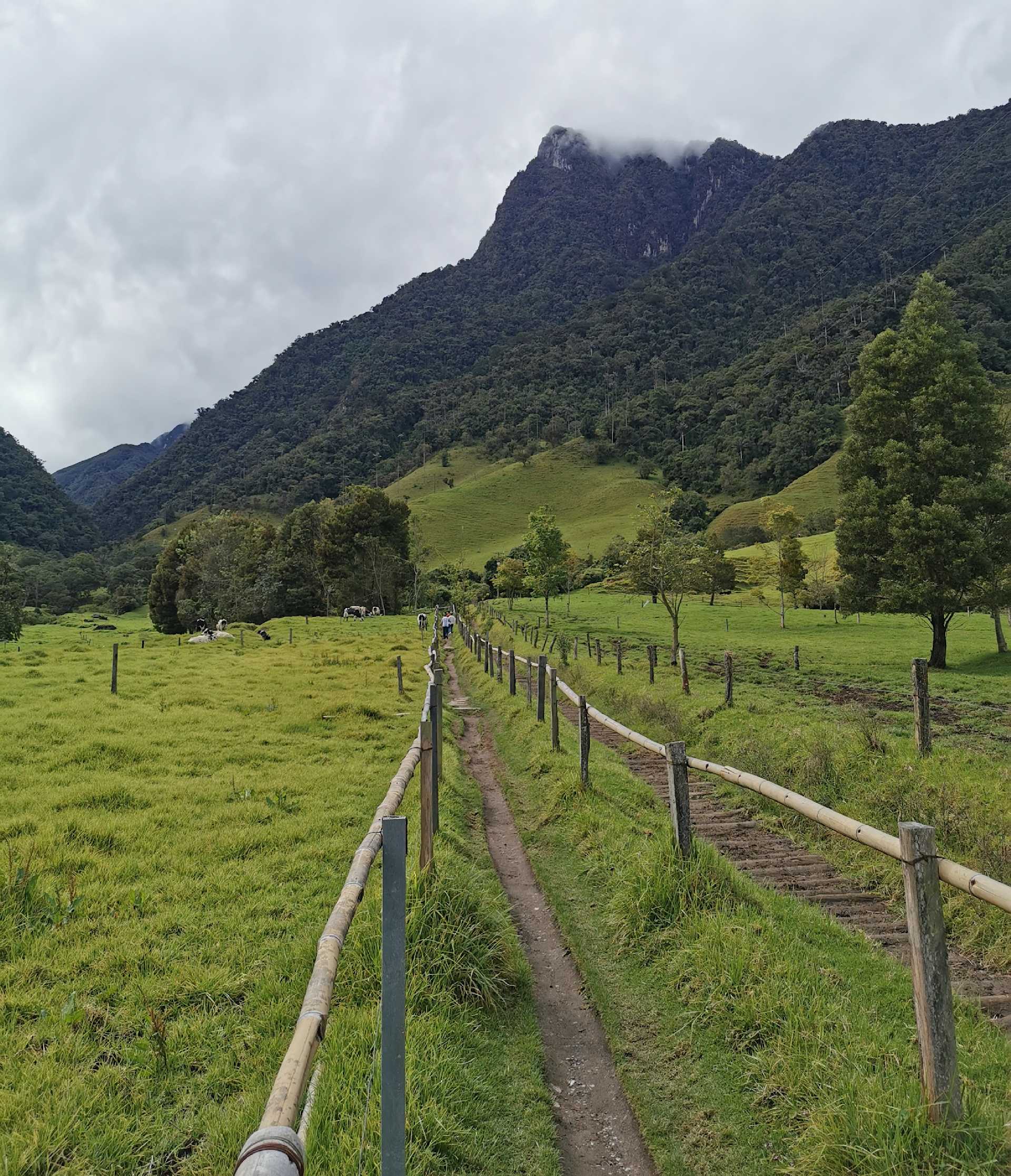
The start of the route is uninspiring, as you work your way along a fenced in muddy path across farmland, under the watchful eye of the grazing cows. Not before long though, the grass gives way to the cloud forest, where you continue along a creek, and start to slowly ascend.
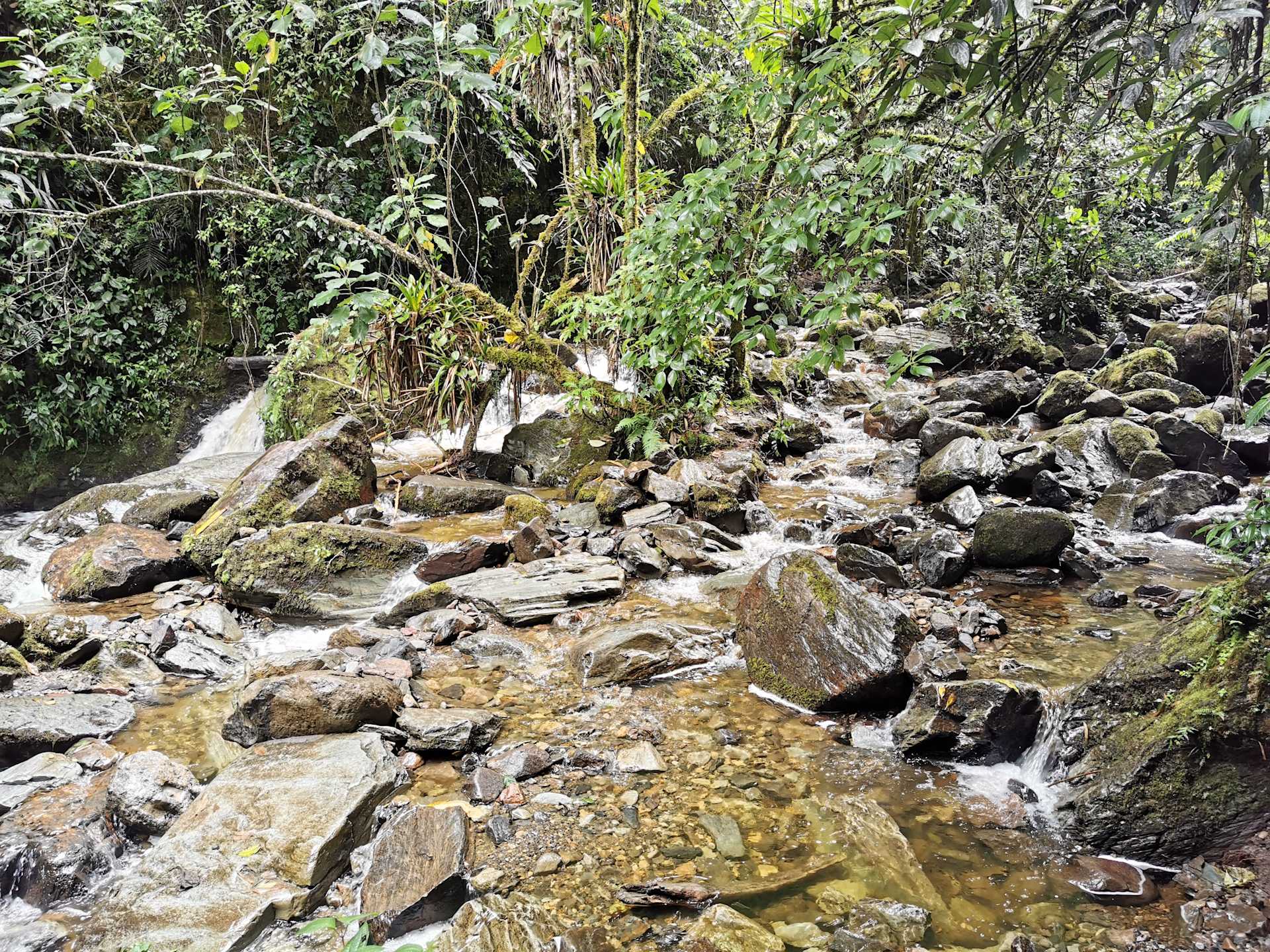
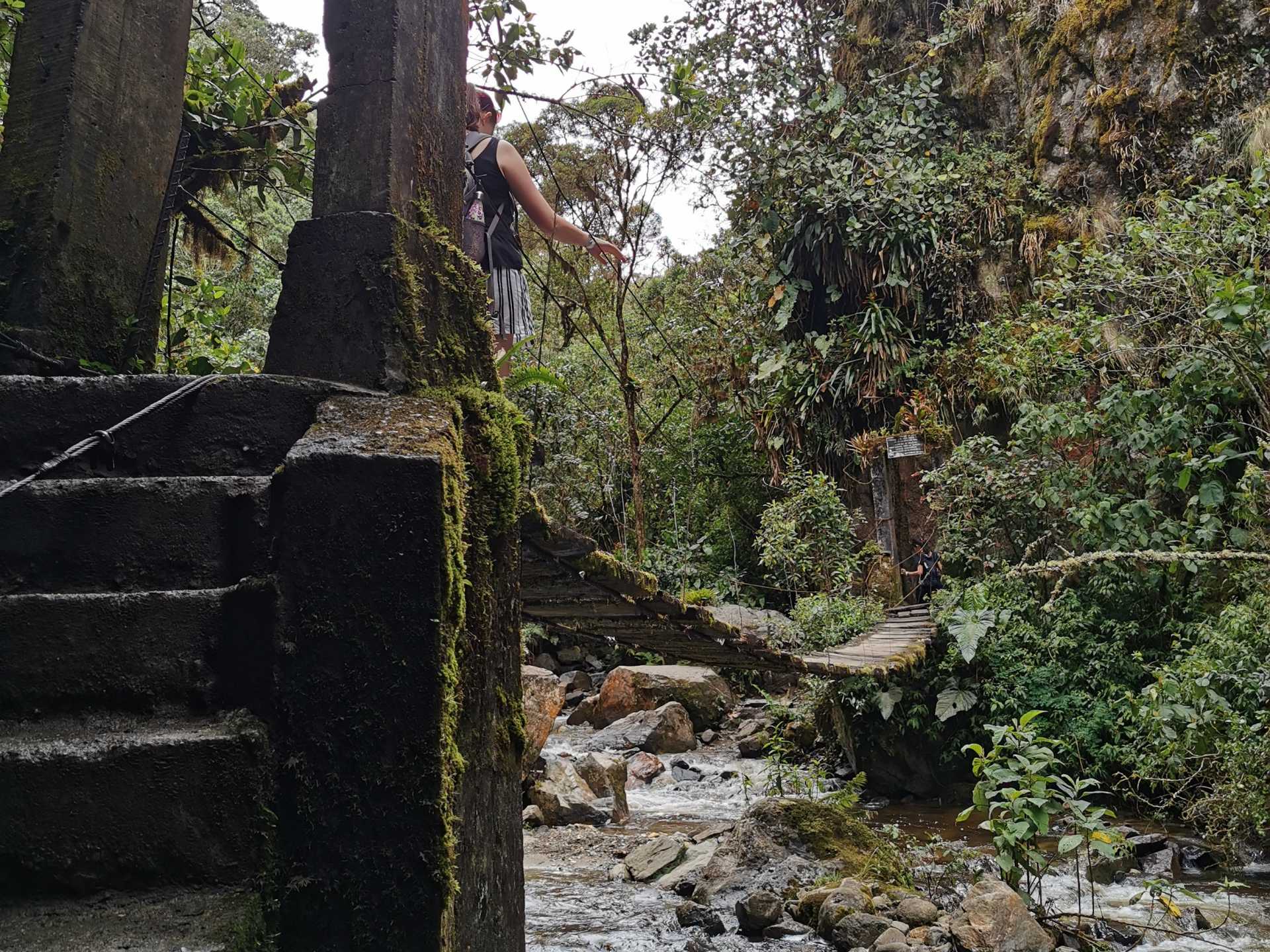
The hike is challenging in parts, with a requirement to cross a series of seven rickety bridges whilst you weave your way over the cascading Quindío river below. The bridges are made from wood and are not in the best condition as you would hope to expect, adding a little excitement to this part of the hike.
At this point you will find yourself deep in the thick Colombian jungle.
Acaime hummingbird sanctuary
Not far after crossing the last bridge, and halfway through the hike, you have the opportunity to take a 2 kilometre looped detour and visit the Acaime hummingbird sanctuary. Around the sanctuary house are hanging numerous hummingbird feeders providing the opportunity for you to take many, if like us, blurry photos of the tiny yet hurried animals.

Acaime: Casa de los Colibríes en Salento
This detour will add around an hour to your trek, but if you have the time, and desire to make the additional climb, we highly recommend you make a visit, and it makes a great stop for a spot of lunch. We happily sat for 30 minutes or so and watched the birds merrily flitting around.
The small ticket price includes the option of a drink, either a hot chocolate, or an intriguing traditional Colombian hot drink made from melted and caramelised sugar cane with cheese.
Finca la Montaña lookout
The hike up to the Montaña lookout could be consider the most taxing part of the climb, as you ascend to emerge into the open air to enjoy stunning views of the 3450m high Cerro Morrogacho towering over the valley, and the surrounding wildlife.

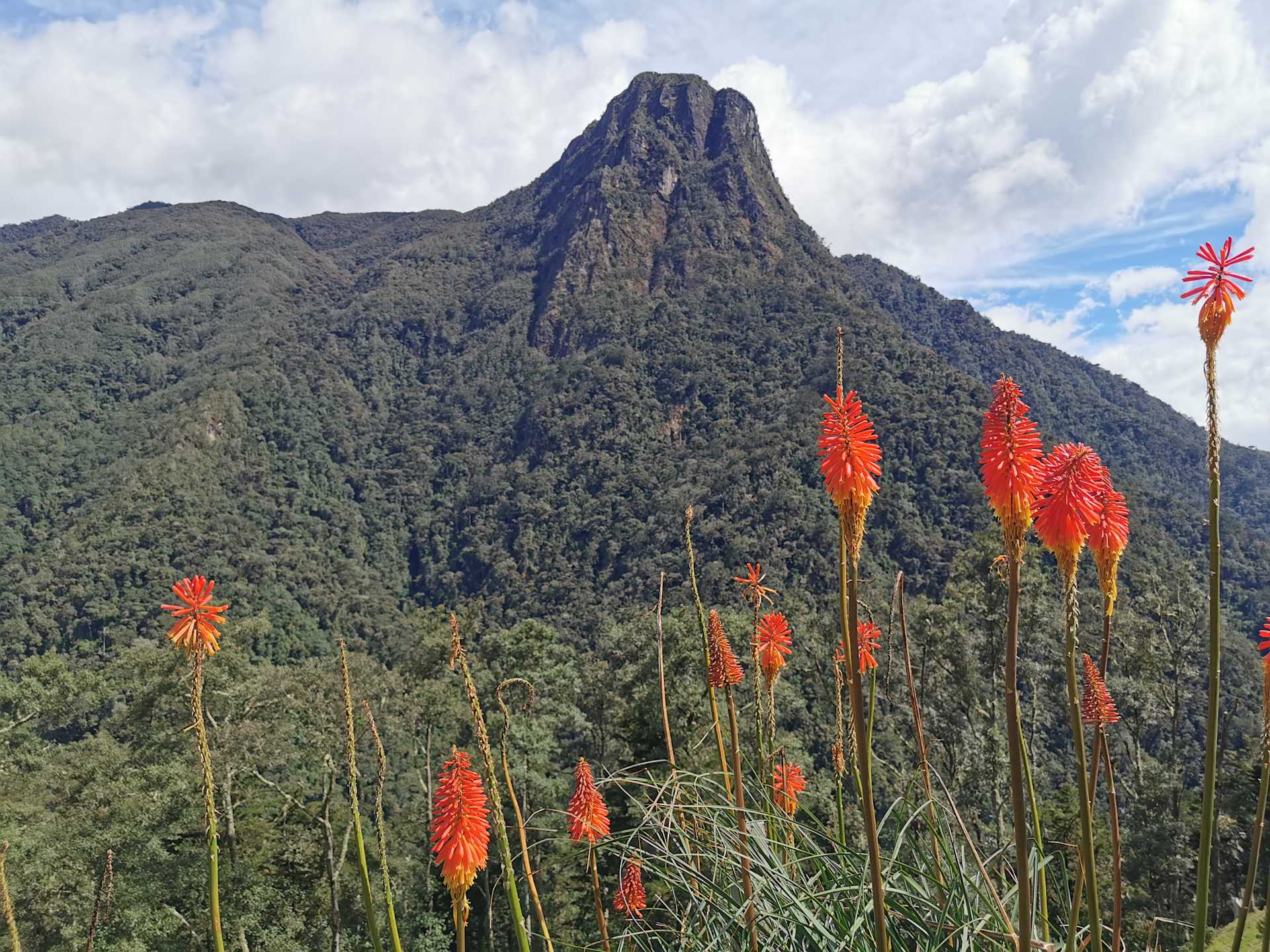
Here is a natural spot to relax and have some snacks whilst enjoying the views, before continuing onto the last part of your hike.
The wax palms forest
The trail between La Montaña and the wax palm forest was much easier, but neither the most entertaining nor visually exciting. But it does not take long to arrive at the first viewpoint Mirador II, creatively named after the second viewpoint on route Mirador I.
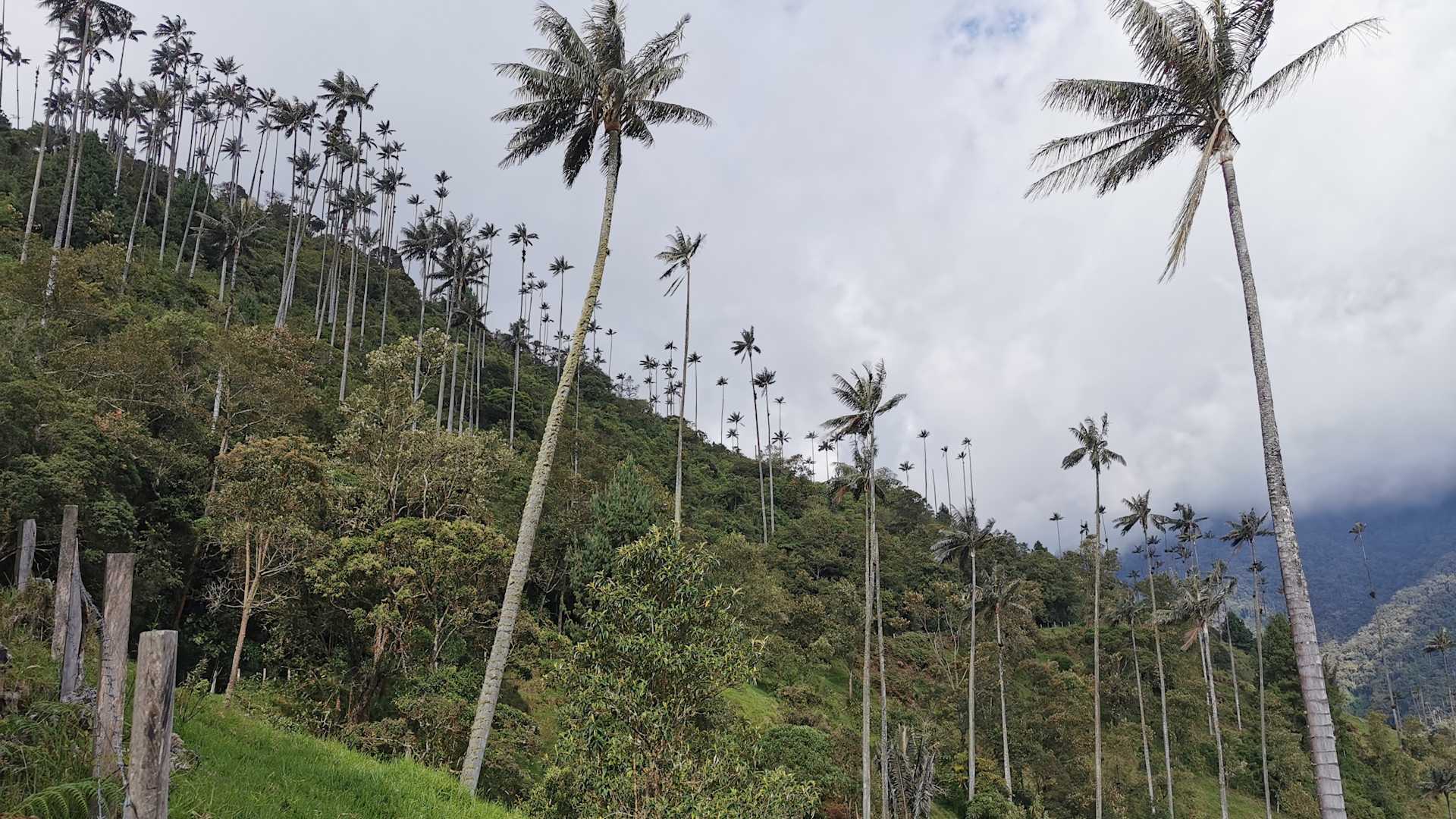
From these viewing points you are finally rewarded, and you can start to appreciate the true scale of the valley, and the size of the trees (which can grow to 60m tall) in one of the only places on Earth to see them in their natural habitat. You can also start to utterly understand why so many visitors make the pilgrimage to the Cocora Valley, with the tall wax palm trees scattered all over the hill and far into the distance.
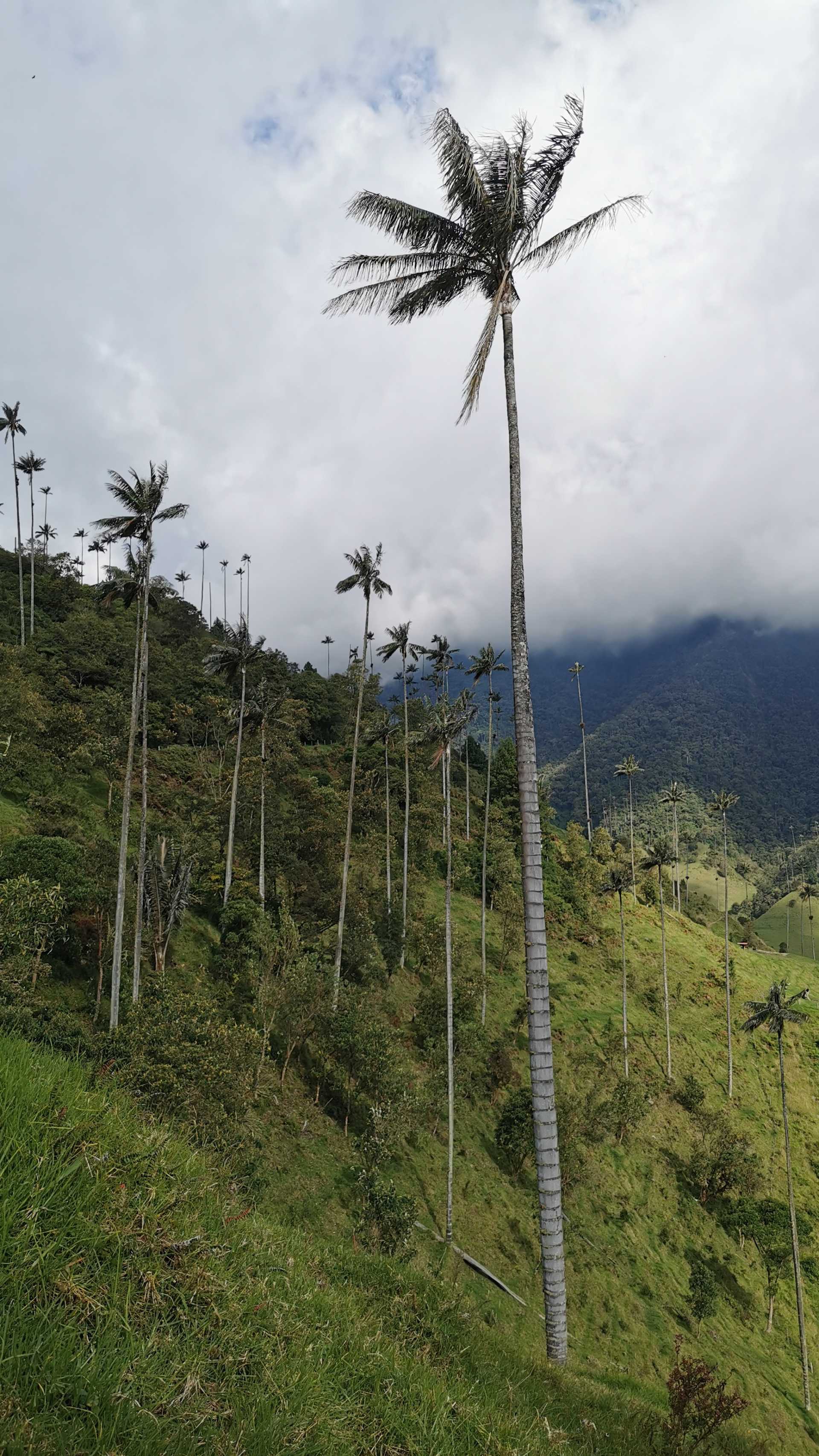
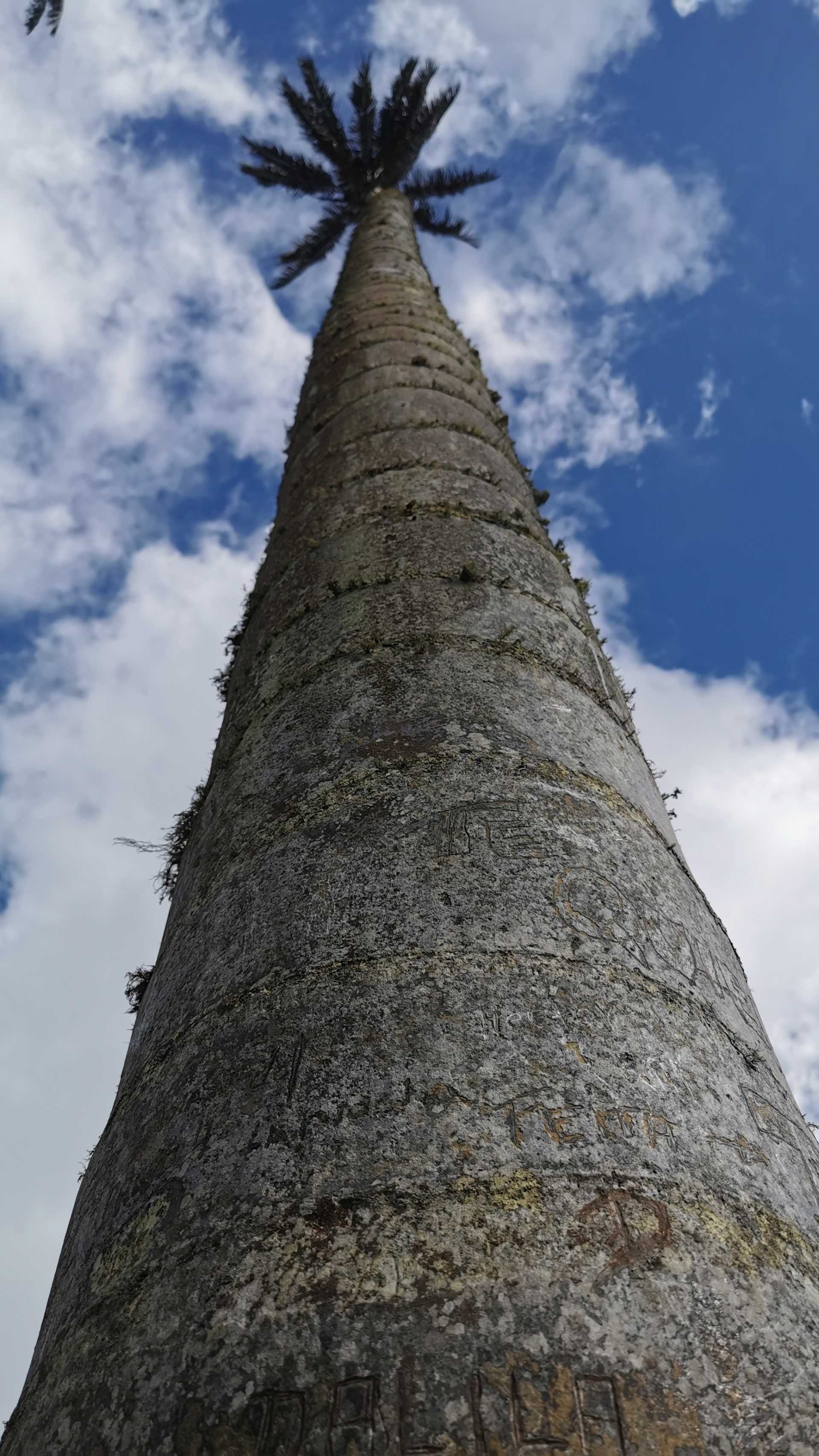
This is the perfect place and opportunity to spend some time to rest up, and to truly take in how peaceful and breath-taking the setting and scenery is. The intensity of the greens in the hills are incredibly vivid, and the trees stand tall and majestic. The trunks of the trees are so slender you can wrap your arms around them, as they make you wonder how they stand so tall and so thin.
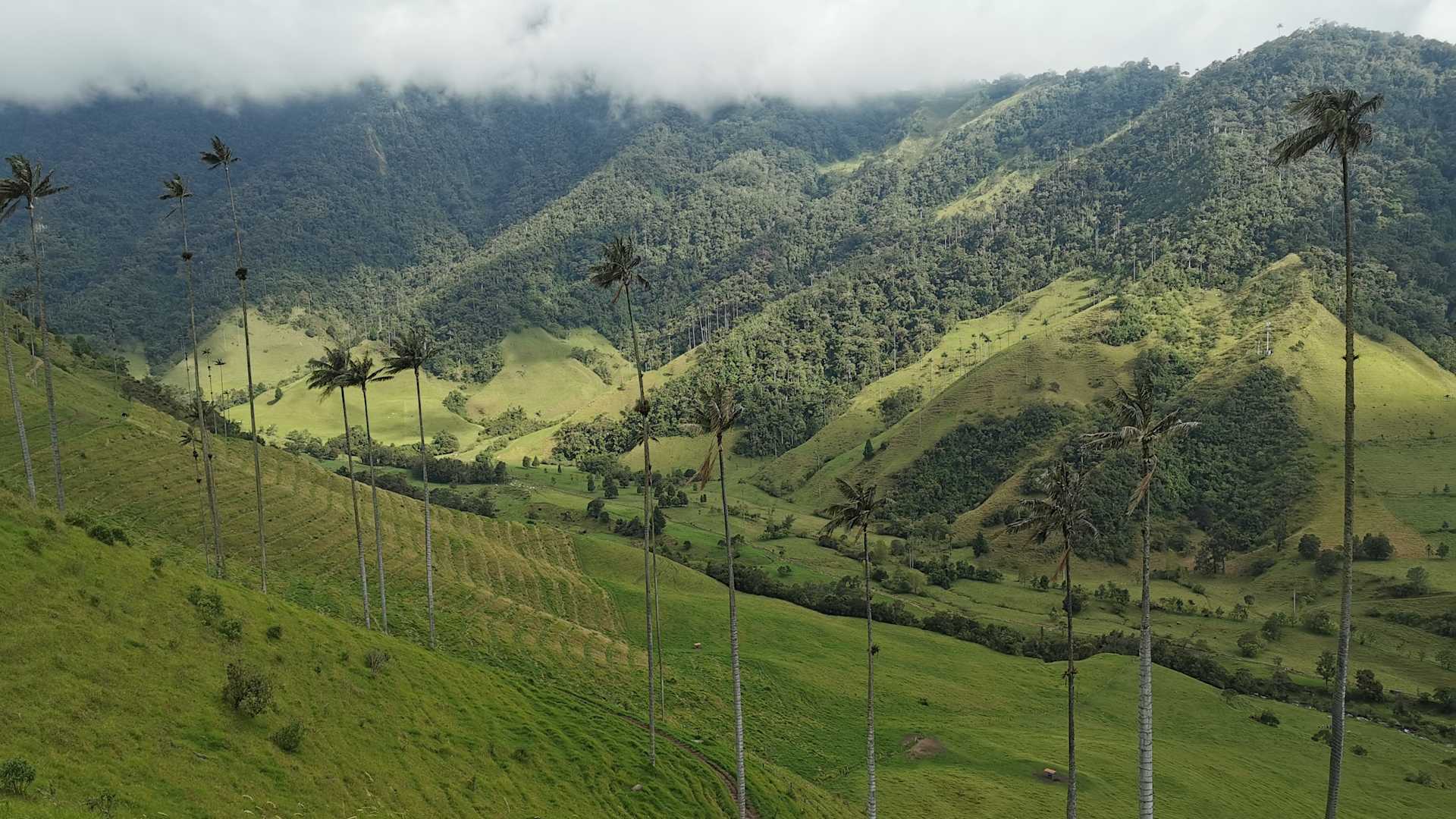
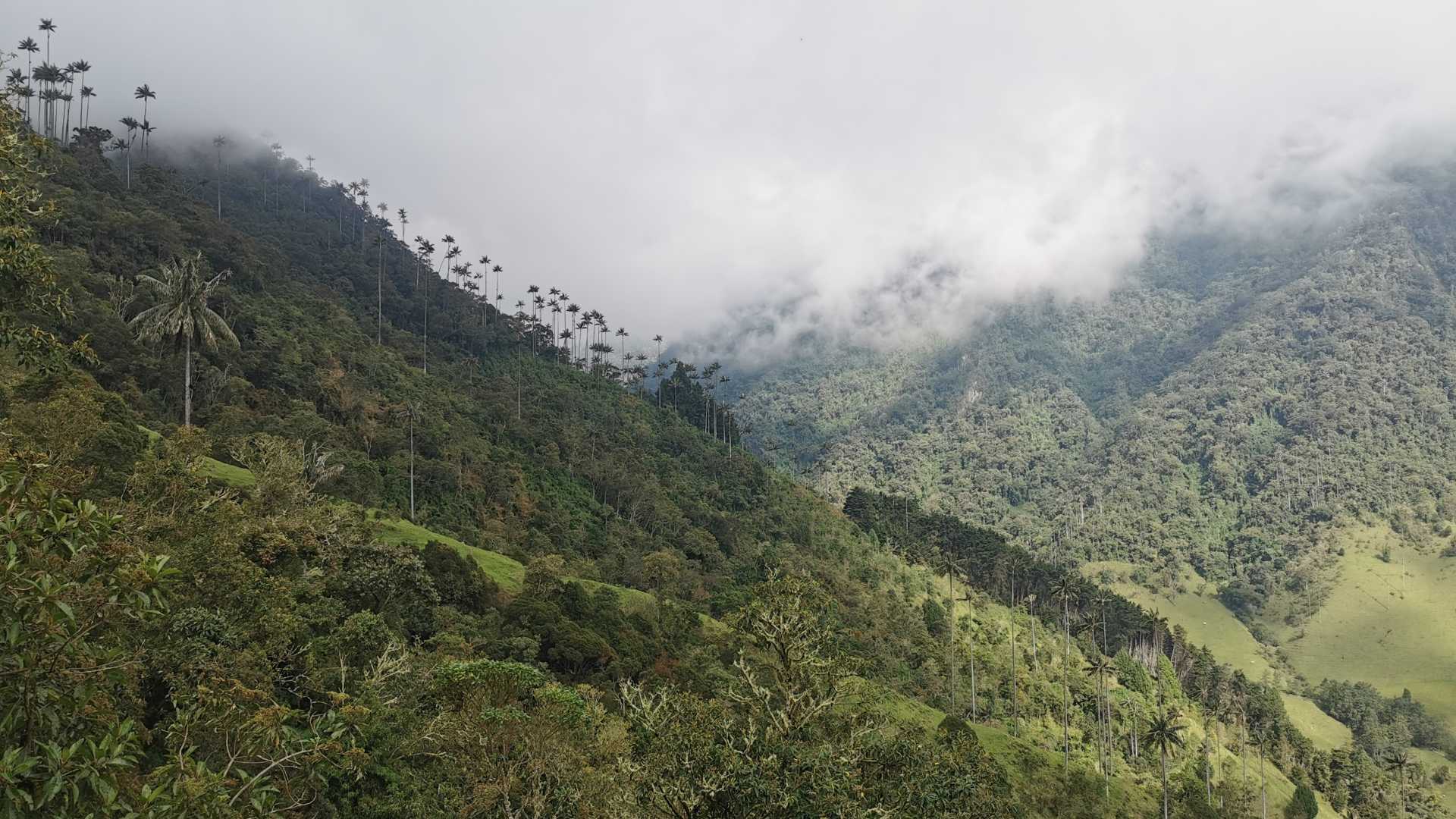
From here you can follow the trail and complete the loop back at the carpark from where you can find a willy to make your return journey. You will notice how significantly more trafficked this section of the route is with tourists and locals.
In summary, the Cocora Valley is a must-see destination that is easy to access from the charming town of Salento. You can enjoy the best of Colombian culture, food, and sport while immersing yourself in the natural beauty of the valley.
Hiking Tips
The hike is not free, and expect to pay twice, once to enter the trail, and again to enter the valley itself.
We recommend wearing proper hiking shoes as there can be a lot of mud if it's been raining, and there are sections of the route that are poorly maintained.
Pack plenty of water for the duration of your hike. Whilst a lot of the trail is under canopy, it can get hot and sweaty.
Alistair is a passionate traveler who has explored a diverse array of cultures and countries, having visited over 50 destinations across multiple continents.
Currently in: London, United Kingdom — @0_7734

